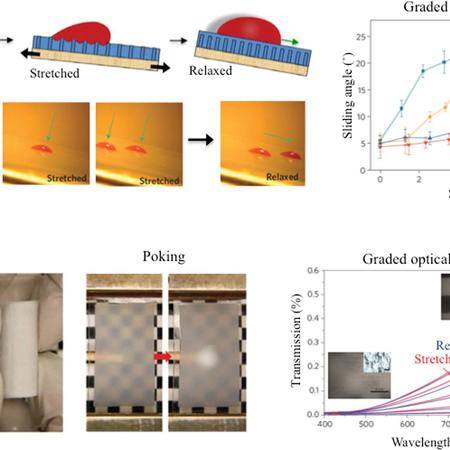Yao X, Hu Y, Grinthal A, Wong T-S, Mahadevan L, Aizenberg J. Adaptive fluid-infused porous films with tunable transparency and wettability. Nature Materials. 2013;12 :529-534. Full TextAbstract
Materials that adapt dynamically to environmental changes are currently limited to two-state switching of single properties, and only a small number of strategies that may lead to materials with continuously adjustable characteristics have been reported1-3. Here we introduce adaptive surfaces made of a liquid film supported by a nanoporous elastic substrate. As the substrate deforms, the liquid flows within the pores causing the smooth and defect-free surface to roughen through a continuous range of topographies. We show that a graded mechanical stimulus can be directly translated into finely tuned, dynamic adjustments of optical transparency and wettability. In particular, we demonstrate simultaneous control of the film's transparency and its ability to continuously manipulate various low-surface-tension droplets from free-sliding to pinned. This strategy should make possible the rational design of tunable, multifunctional adaptive materials for a broad range of applications.

